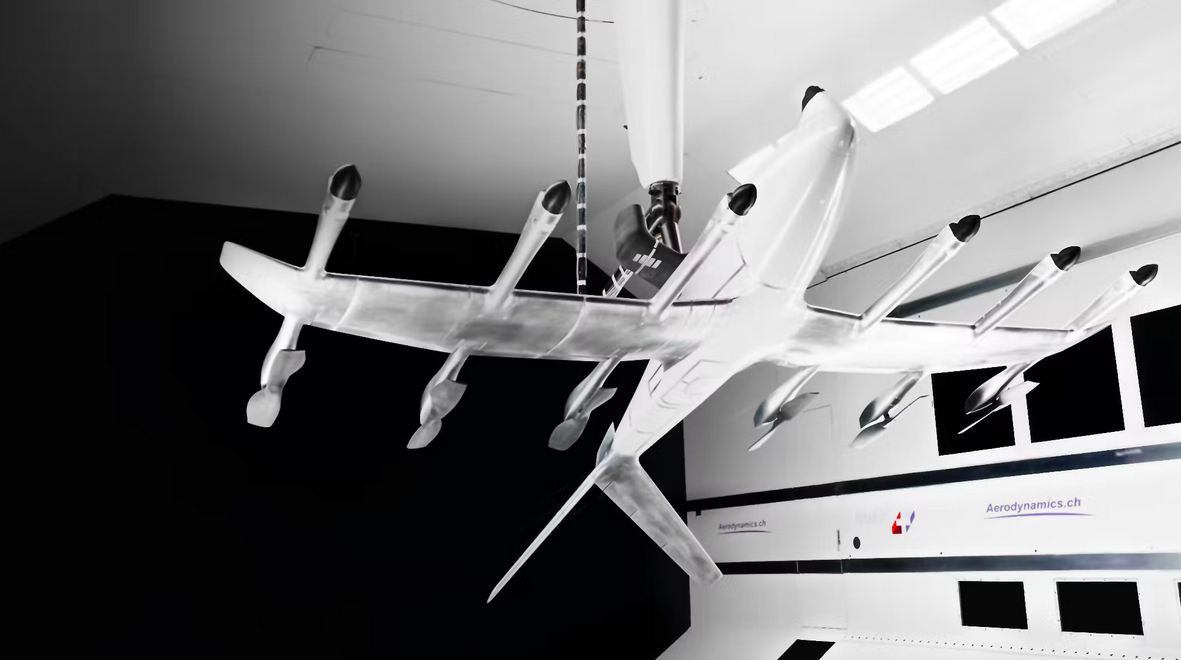Archer Aviation has had its ADAVe (eVTOL) Midnight model flown again, this time at the Ruag wind tunnel in Emmen, Switzerland. The test at Ruag provided the manufacturer with valuable data to validate the Midnight's configuration, aerodynamic models, external load predictions, aircraft performance, stability and control characteristics, and performance degradation in icing conditions.
A new wind tunnel test campaign
Archer recently completed a six-week wind tunnel test campaign of the Midnight configuration in the Ruag large subsonic wind tunnel in Emmen, Switzerland. This follows on from previous campaigns at the Politecnico di Milano (propeller performance and propeller-chassis interactions), the University of Florida (validation of the acoustic tool chain) and the University of Notre Dame (validation of wing, tail and propeller airfoil performance). The test at Ruag provided the manufacturer with valuable data to validate the Midnight's configuration, aerodynamic models, external load predictions, aircraft performance, stability and control characteristics, and performance degradation in icing conditions, "keeping us on track for the next Midnight flight test programme," the manufacturer added.
27.6% model with a wingspan of over 3.9 m
Ruag operates one of the largest and most efficient wind tunnels in the world. It also has extensive testing experience that is trusted by the aerospace industry worldwide, making Ruag an ideal partner for this important campaign. DeHarde, a German company known for its high-quality, high-precision wind tunnel models, designed and built the 27.6% scale, unpowered model of the Midnight for this test campaign, with a wingspan of over 3.9m. This size was chosen very intentionally to maximise the similarity of the test data and correlation with the full scale, while fitting in with the wind tunnel's 5m x 7m footprint. The model was unpowered, meaning that the propellers were not turned during the tests, so that the focus could be on the aerodynamics of the airframe.
878 measurements performed
The aim of the test campaign was to develop a comprehensive data set to validate the engineering design tools and confirm the aerodynamic predictions of the Midnight design. A total of 878 measurements were made by varying the model angle of attack and sideslip and capturing force and moment trends for over 400 different model configurations. These model changes included varying control surface travel, adjusting forward boom angles and using an airframe component assembly system. This construction began with a bare wing and fuselage, and then successively added the booms, landing gear, empennage and dead-reverse propellers. This approach allowed Archer to study and clearly understand the progressive effects of each airframe component. This wind tunnel test represents an important risk reduction and validation step for Archer.
Propulsion system effects on aerodynamic performance
This latest wind tunnel campaign has further validated the models and predictions for the Midnight's configuration and expected performance. "All of these lessons, as well as those we continue to extract from the rich data set we have collected, allow us to take an important step in the development and certification of the Midnight. The next step is a wind tunnel test that will investigate the effects of the propulsion system on aerodynamic performance, while we remain on schedule for the next Midnight flight test programme," adds Archer Aviation.

